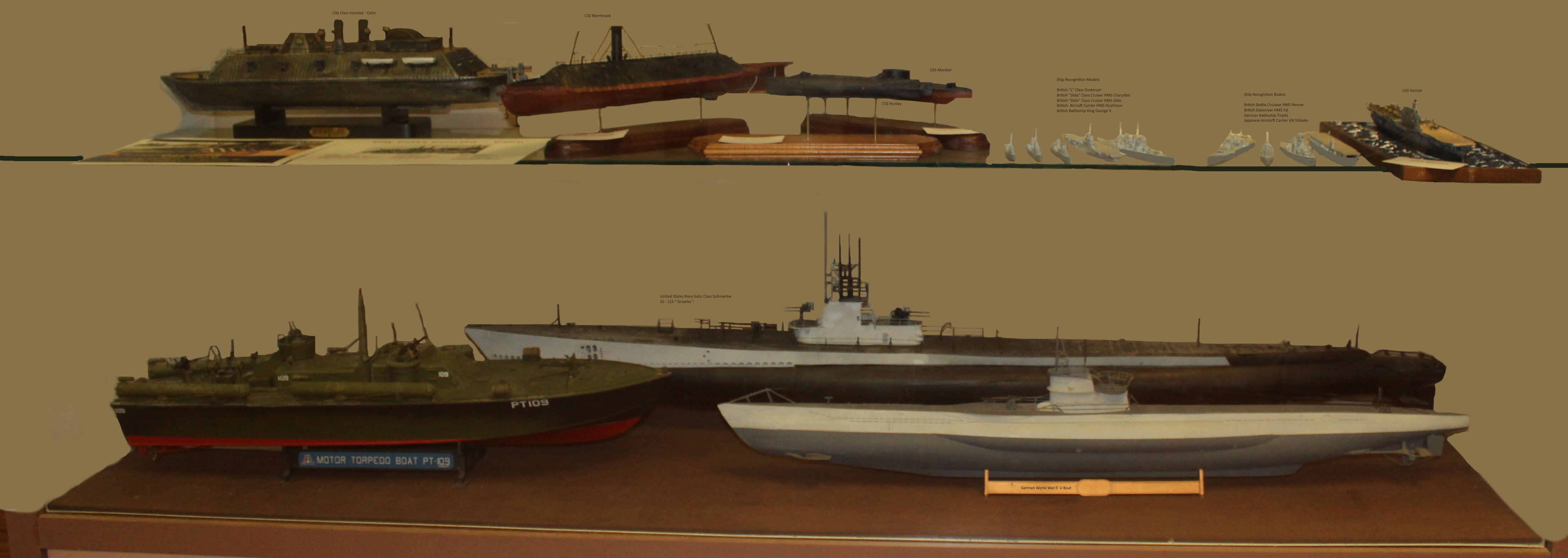USS Cairo:
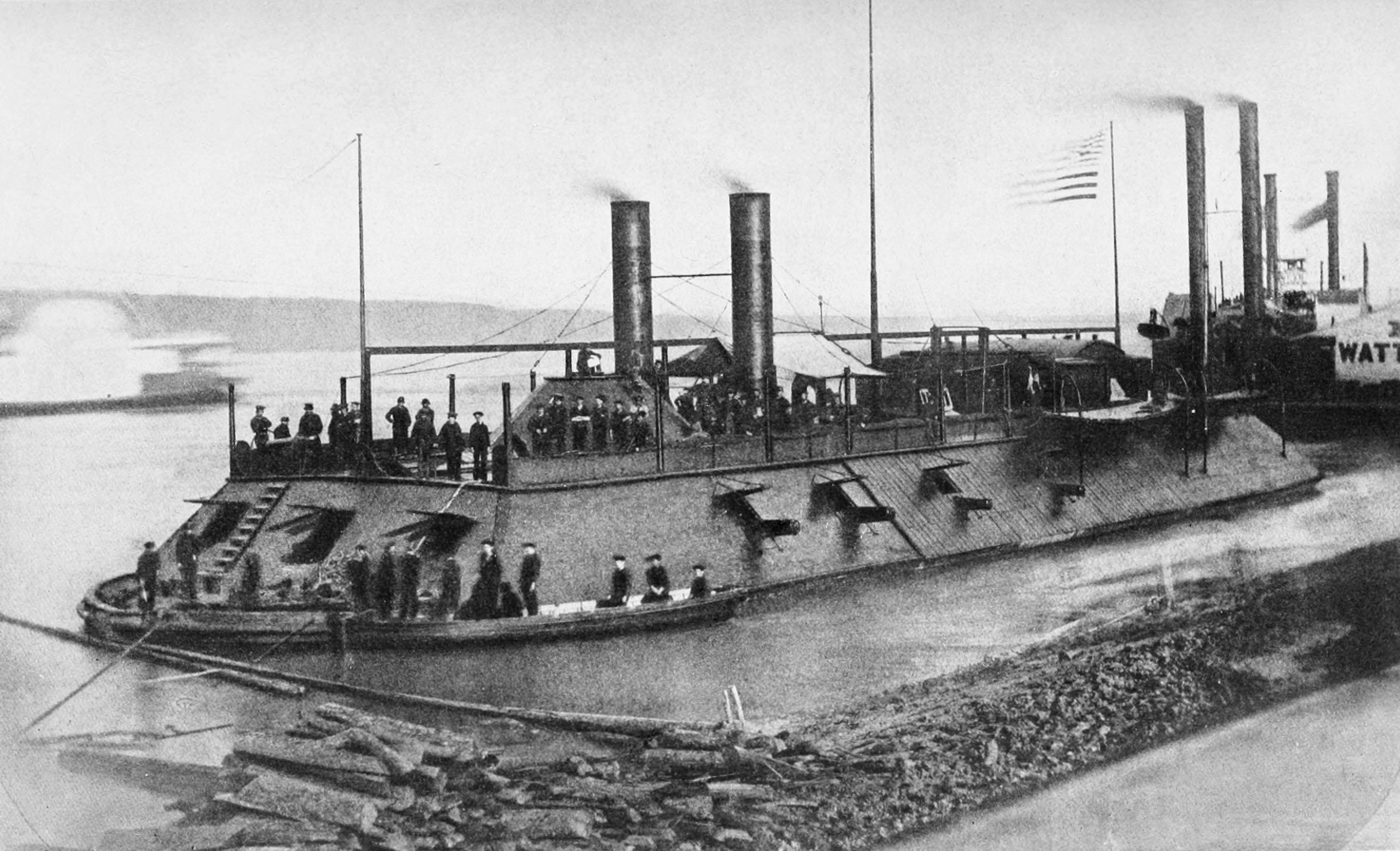
The USS Cairo was a casemate ironclad built and operated by the Union Army. It was steam powered and had a top speed of 4 knots. It was armed with 14 cannons and had iron plating 2-3 inches thick and had a crew of 250 officers and men. In one famous action, the USS Cairo captured the Confederate garrison of Ft Pillow which enabled Union forces to occupy Memphis. The USS Cairo was sunk by a remotely detonated mine in 1862. Today, the USS Cairo is one of only four remaining Civil War ironclad warships.
CSS Virginia:
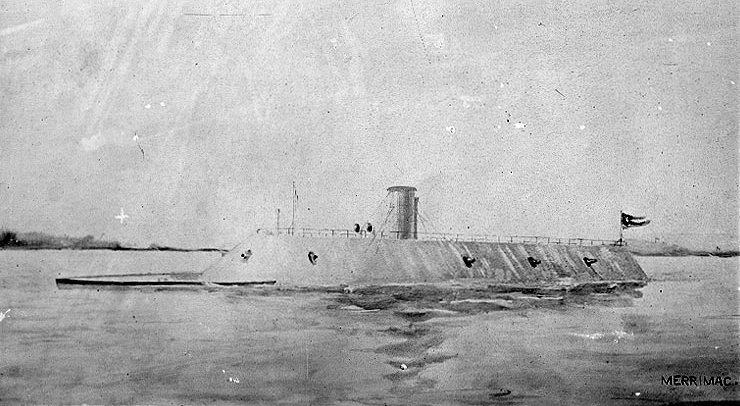
The CSS Virginia was a Ironclad warship built and operated by the Confederate States Navy during the American Civil War. The CSS Virginia was a Casemate Ironclad, which is a low cut hull with a upper structure designed to house fixed gun emplacements configured to fire broadsides. The hull was heavily armored with slopping iron plates to deflect cannon shot. The disadvantage of this design was that the guns could be aimed only by turning the ship which required more time than aiming guns of the turreted Monitor Ironclad. The CSS Virginia was built on the salvaged hull of the USS Merrimack. The CSS Virginia had 14 gun ports. The CSS Virginia fought the USS Monitor in the famous Battle of Hampton Roads, which was the first engagement of ironclads in naval warfare. The CSS Virginia was eventually scuttled in 1862 by her crew to prevent capture by advancing Union Forces.
CSS Hunley: 
The CSS Hunley was an American Civil War submarine operated by the Confederate States. The Hunley was the first submarine to sink a warship. The Hunley was built in Mobile, Alabama and launched in July 1963. The Hunley was one of three submarines financed by Horance Lawson Hunley. The construction of the Hunley began shortly after the loss of its predecessor, the American Diver was lost near Fort Morgan. It is believed that the Hunley's cylindrical main structure was made from a steam boiler. The vessel was 40ft long and 4 ft wide, and had a crew of eight men. Propulsion was powered by hand crank operated by seven of the crew. This limited the speed of the craft to about two knots. Each end of the submarine was equipped with ballast tanks. There were also ballast material attached by screws that could be dropped from the vessel by removing screws from inside the crew compartment. The Hunley was armed with a spar torpedo attached to the front of the vessel which was rammed into the ship under attack. The Hunley made her only attack against the enemy ship Housatonic on February 17th, 1864. It is believed that the close range required for delivering the torpedo caused damage to the Hunley that sank the craft with all crew members. The Hunley had also sunk twice during training with some fatalities including Hunley himself. The wreck of the Hunley was found in 1995 and eventually raised. The remains of the crew were recovered along with the submarine which underwent major preservation efforts. Hunley may be viewed during tours at the Warren Lasch Conservation Center, in Charleston. A replica is on display at Battleship Memorial Park, Mobile, Alabama, alongside the USS Alabama (BB-60) and the USS Drum (SS-228).
USS Monitor: 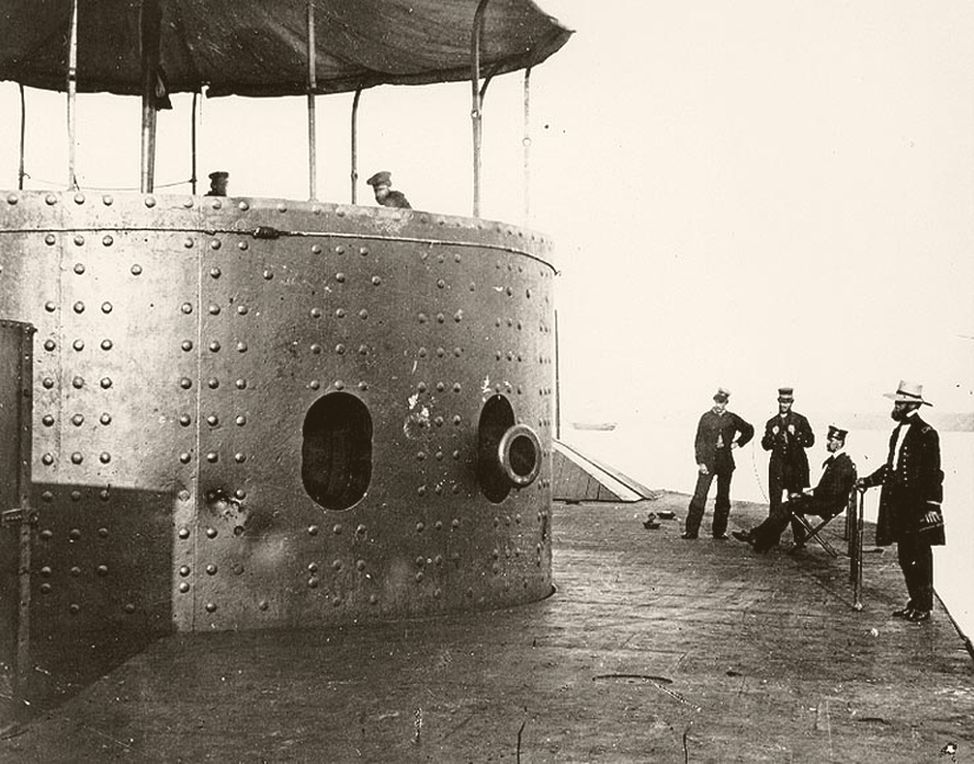
The unusual design consisted of a low freeboard upper hull known as the "Raft". A small pilot house was located on the forward area of the bow. The top of the armored deck was only 18 inches above the water line and was protected by 1 inch think iron plates. The sides were protected by three to five inch thick iron plates and backed by 30 inches of wood structure. The round gun turret was 20 ft wide and 9 ft tall. The turret structure including the two guns weighed 160 tons. The turret was suspended by a 9 inch diameter spindle which allowed its rotation. The vessel was powered by a single cylinder steam engine which generated 320 Horsepower which allowed a top speed of 8 knots. The USS Monitor was built as a response to the development of a similar ironclad vessel by the Confederates, the CSS Virginia. The USS Monitor was crewed by 49 officers and enlisted men. The USS Monitor and the CSS Virginia engaged each other in combat at the Battle of Hampton Roads. The two vessels exchanged cannon fire and scored multiple direct hits, but the battle ended as a stalemate. The USS Monitor was un-seaworthy in rough waters and sunk in a squall near Cape Hatteras, North Carolina.
USS Hornet:

The USS Hornet CVS-12 is an Essex Class carrier built for the US Navy during WWII. The vessel was built in 1943 and was assigned to the Fast Carrier Task Force operating in the Pacific Theater. The Hornet participated in operations near New Guinea, Palau and Truk and others. Hornet then took part in the Mariana and Palau Islands campaign and the Battle of the Philippine Sea. After the war the Hornet took part in Operation Magic Carpet, returning troops to the U.S. and was then placed in reserve in 1946. Hornet was reactivated during the Korean War of 1950–1953, but spent the rest of the war being modernized to allow her to operate jet-propelled aircraft. The ship was modernized again in the late 1950s for service as an anti-submarine carrier. The Hornet was used again during the Apollo program, recovering the Apollo 11 and Apollo 12 astronauts when they returned from the Moon. Hornet was decommissioned in 1970 was designated as both a National Historic Landmark and a California Historical Landmark, in Alameda, California, in 1998.
Elco PT Boat:
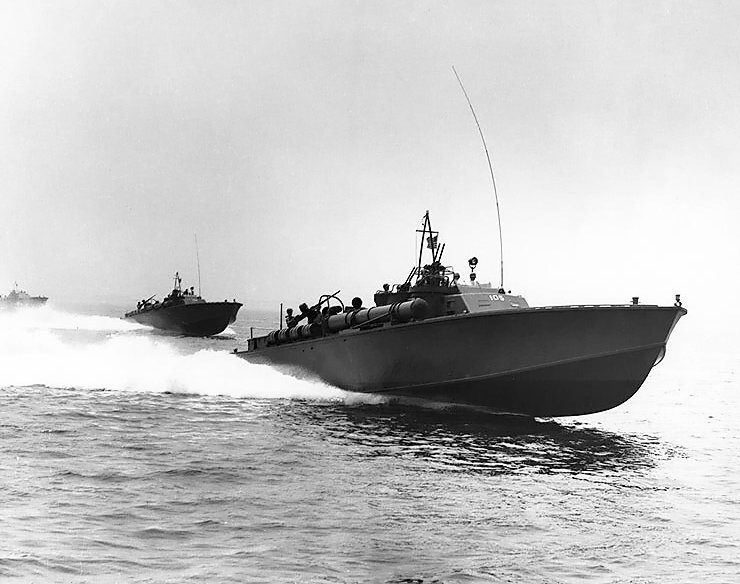
The PT boat is a motor torpedo boat used by the US Navy in World War II. PT boats were fast and maneuverable and very effective in engaging enemy warships, transports, tankers, barges and sampans. PT boats borrowed some planning hull design borrowed from offshore racing powerboats. These were equipped with Mark 8 torpedoes and two Browning M2 heavy machineguns. PT boats were powered by Packard 5M-2500 V-12 marine engines. Elco PT boats were built by the Elco Naval Division and were the most numerous of the various types of PT boats built with over 320 made. These boats were 80 ft in length, and 20 ft wide and constructed with a wooden hull. The Elco PT boat was made of 2 layers of 1 inch thick mahogany planks with a layer of glue impregnated canvas in between held together by thousands of bronze screws. The hull was extremely sturdy and could withstand severe damage and remain afloat. President John F Kennedy’s boat, PT 109 remained afloat for 12 hours after being cut in half by the Japanese destroyer Amagiri. The Elco PT boat had a crew of between 12- 17 and weighed up to 56 tons. PT boats were designed with a planning hull with a sharp V at the bow becoming flat at the stern. The primary armament was four Mark 8 Torpedoes and .50 caliber M2 machineguns mounted on open ring twin mounts. Some early Elco boats were equipped with 7.62 caliber Lewis machineguns with pedestal mounts. Some boats were also equipped with various weapons including rocket launchers, mines and the 40mm Bofors. PT boats were the most heavily armed vessels of the US Navy. The 5M 2500 engine incorporated intercoolers, superchargers, dual magnetos and had two spark plugs per cylinder and generated 1800 HP and was capable of propelling the craft at up to 50 knots. PT boats served effectively in the Solomon Islands and in the Normandy Invasion. In the Solomon Campaign, PT boats were very effective against Japanese supply barges and caused severe shortages of food and ammunition. Only 12 PT boats remain preserved today.
USS Growler SS-215:

The USS Growler was a Gato class submarine built by the Electric Boat Company of Groton, Connecticut. The USS Growler was launched on November 2,1941 and commissioned in March, 1942. During her service, the USS Growler performed 11 war patrols. Her patrols ranged from the Aleutians, Taiwan, Rabaul, Marianas–Eastern Philippines–Luzon area, and the South China Sea. During the Growler's third patrol, near the Bismark Islands, the Growler encountered an enemy ship, the 900 ton stores ship Hayasaki and to rammed the vessel in the are between the bow and the bridge. After the Growler plunged into the Japanese ship, the enemy crew opened fire with its machine guns. The machine gun fire killed two crew members on the bridge and mortally wounded Lieutenant Commander Howard W. Gilmore, skipper of the USS Growler. An immediate order to clear the bridge was issued. At this moment, Gilmore realized his inability to get below decks jeopardized the Growler and her crew. He issued the command to dive the ship. The executive officer closed the hatch and dove the ship as the Japanese continued to rake the submarines bridge with machine gun fire. The Growler safely submerged, but Gilmore and two crew members were lost. Gilmore became the first of seven submarine commanders to receive the Medal of Honor. The Growlers eleventh and last patrol took place in the South China Sea. The Growler was operating with a submarine wolf pack and attacked a Japanese convoy. Shortly after Growler closed in to attack, contact was lost. Explosions were heard,but it remains unclear if the Growler was lost due to hits from enemy torpedoes or depth charges, or if the submarine was a victim of one of its own errant torpedoes performing a circular run in an incident similar to the loss of the USS Tang. Two other submarines from the wolfpack , the Hake and the Hardhead attempted to contact the Growler continuously for three days, but were unsuccessful. On February 1, 1945, the USS Growler was officially declared lost with all crew members. During her service in WW2, the USS Growler was credited with having sunk 15 enemy vessels with an estimated 74,900 tons.
German Submarine Type V11C:
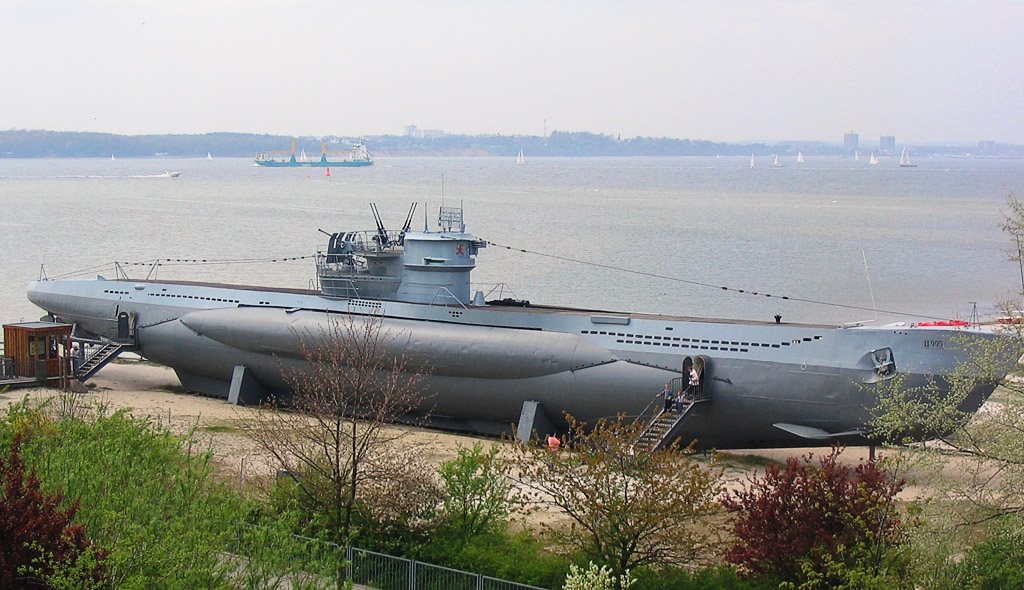
Type VII U-boats were the most common type of German World War II U-boat. Over 700 were made. Of these, only 1 exists today which is on display in Laboe, Schleswig-Holstein, Germany. Type VII U-boats were the most widely used German U-boat and the most produced submarine class in history. The first type V11C u-boat was commissioned in 1940. These had a range of about 8,500 miles which was limited compared to other models. For long missions, they had to be refueled at sea by special U-boat tenders. In 1944 and 1945, these U-boats were equipped with snorkels. These U-boats used diesel engines for surface running, and, battery powered electric motors for submerged propulsion. The Type V11C had a crush depth of 800 ft and was equipped with 4 bow tubes and one stern tube.



